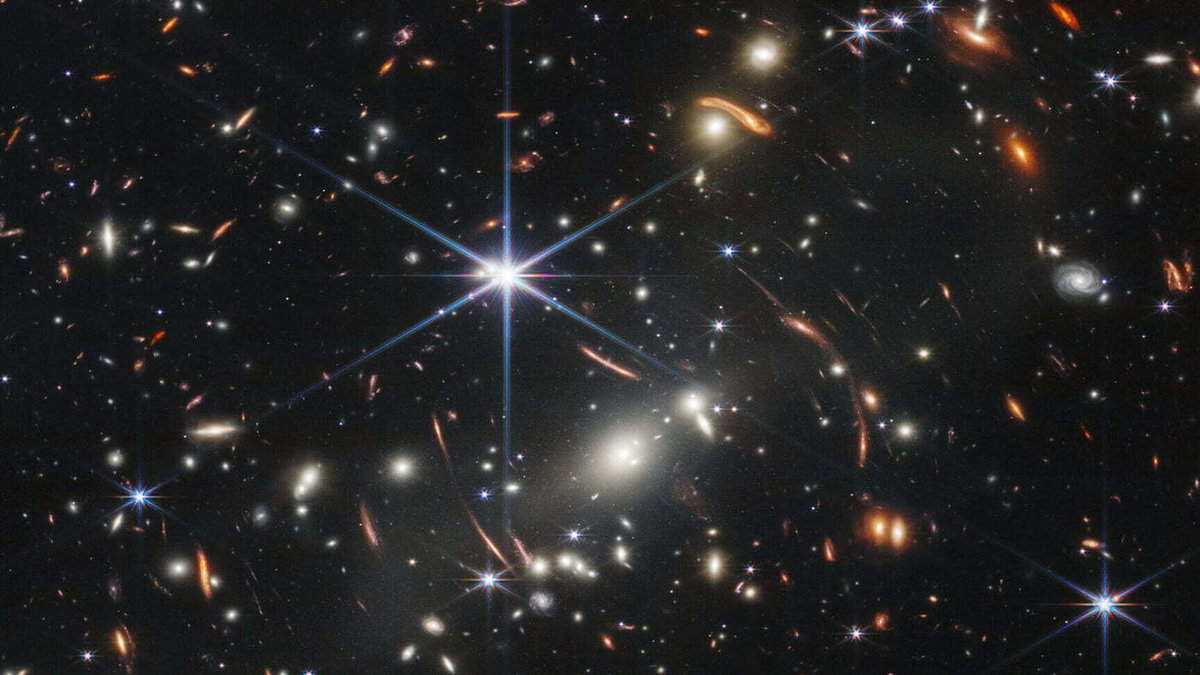
Astronomical research focuses on the scientific exploration of celestial objects like stars, planets, comets, and galaxies. This field also encompasses the study of phenomena that occur outside of Earth’s atmosphere, such as cosmic background radiation. Astronomy is one of the oldest scientific disciplines and encompasses the study of evolution, physics, chemistry, meteorology, and the motion of celestial bodies. Moreover, it seeks to understand the origins and evolution of the universe.
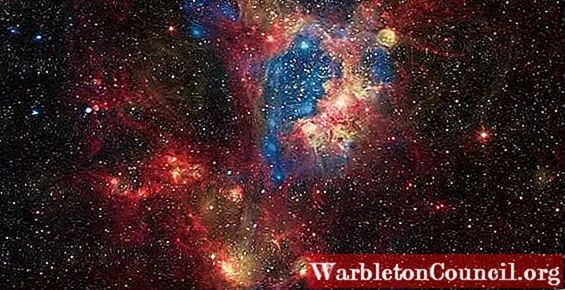
The night sky was systematically observed by ancient astronomers, even predating the earliest recorded civilizations. Archaeologists have even discovered astronomical artifacts that are older than these civilizations.
As a result, the telescope was invented long before astronomy became recognized as a modern science.
Throughout history, astronomy encompassed various disciplines, including astrometry, astronomical observations, calendar creation, and even astrology at one point. However, modern professional astronomy is now comparable to astrophysics (Redd, 2012).
Since the 20th century, the field of professional astronomy has been divided into branches responsible for observing celestial bodies and others dedicated to analyzing the theories that arise from their study.
The most frequently studied celestial body is the Sun, a typical star of the G2 V stellar class, which is approximately 4.6 billion years old.
Although the Sun is not classified as a variable star, it does undergo periodic changes in activity known as the sunspot cycle.
Categories of astronomy
Astronomy is divided into two main categories: observational astronomy and theoretical astronomy.
Observational astronomy focuses on acquiring information and analyzing data using fundamental physical principles. On the other hand, theoretical astronomy concentrates on constructing computerized analytical models to explain astronomical objects and phenomena.
These two branches of astronomy complement each other, with theoretical astronomy providing explanations for the observations made by observational astronomy.
Observational astronomy is utilized to validate the findings of theoretical astronomy (Physics, 2015).
Novice astronomers have made numerous significant astronomical breakthroughs. As a result, astronomy is regarded as one of the limited disciplines where emerging scientists can actively and significantly contribute, particularly in identifying and studying temporary phenomena (Daily, 2016).
Observational Astronomy
Observational astronomy is a branch of the field of astronomy that is focused on directly studying celestial bodies such as stars, planets, galaxies, and other objects in the universe.
While telescopes are commonly used in this field of study, it’s important to note that the earliest astronomers made their observations without any kind of assistance.
The original astronomers were able to identify and map out the modern constellations by carefully observing the night sky. This allowed them to recognize the five planets of our solar system (Mercury, Venus, Mars, Jupiter, and Saturn) and propose the modern constellations that we know today.
In order to study celestial objects in greater detail than what can be seen with the naked eye, modern telescopes, including reflectors and refractors, were invented (California, 2002).
Theoretical Astronomy
The field of theoretical astronomy is dedicated to the analysis of the development of various systems in the universe.
Unlike many other scientific disciplines, astronomers are unable to directly observe the complete life cycle of any system, from its inception to its demise. The formation of planets, stars, and galaxies spans millions, or even billions, of years.
Consequently, astronomers rely on photographs of celestial objects at different stages of development to gain insights into their formation, evolution, and eventual demise.
Therefore, theoretical astronomy is closely intertwined with observational data, as simulations require empirical information to accurately model these complex systems.
Fields of research
Astronomy encompasses various areas of research that enable scientists to specialize in specific celestial objects and phenomena.
Study of planets, stars, and the Sun
Within the realm of astronomy, there are distinct branches dedicated to examining the development, evolution, and demise of celestial bodies.
For instance, planetary astronomy focuses on the exploration of planets, solar astronomy delves into the study of the Sun, while stellar astronomy investigates stars, black holes, nebulae, white dwarfs, and supernovae, which undergo stellar death.
Stellar astronomy
This branch of astronomy focuses on the study of our own galaxy, the Milky Way. On the other hand, extragalactic astronomers specialize in observing and analyzing objects that exist outside of our galaxy, with the goal of understanding the processes of star formation, evolution, and death.
Astrophysics
Astrophysics explores the universe as a whole, starting from its explosive birth, known as the Big Bang, to its ongoing evolution and eventual demise.
While astronomy primarily deals with individual celestial objects and observable phenomena, astrophysics delves into the broader properties of the universe, often in a more abstract and theoretical manner.
Topics such as string theory, dark matter and energy, and the concept of parallel universes fall within the realm of astrophysics (Redd, Space.com, 2012).
Astrometry
Astrometry is the oldest branch of astronomy. Its main objective is to measure the positions and movements of celestial objects, such as the Sun, Moon, and planets.
Accurate calculations of their motions have allowed astronomers in various fields to study the formation and evolution of planets and stars.
As a result, they have been able to predict and understand astronomical events like eclipses, meteor showers, and the appearance of comets.
Early astronomers observed and recognized patterns in the sky, which they organized into constellations, helping them track the changing seasons.
These observations and tracking of stars and other celestial bodies were conducted worldwide, with particular emphasis in China, Egypt, Greece, Mesopotamia, Central America, and India (Zacharias, 2010).
Current State of Astronomy
The majority of astronomical observations conducted in the present day are done remotely.
Consequently, telescopes are positioned either in space or at designated locations on Earth, with astronomers operating them through a computer interface where they store images and data.
Photography advancements, particularly in the digital realm, have revolutionized the field of astronomy, allowing astronomers to capture awe-inspiring photographs of the universe. These images serve not only scientific purposes but also serve to educate and inform the general public about celestial phenomena (Naff, 2006).
References
- University of California. (2002). Introduction to telescopes. Retrieved from earthguide.ucsd.edu.
- Daily, S. (2016). Astronomy. Retrieved from sciencedaily.com
- Naff, K. F. (2006). Astronomy. Greenhaven Press.
- School of physics. (2015). Retrieved from physics.gmu.edu.
- Redd, N. T. (June 6, 2012). What is astronomy? Definition and history. Retrieved from space.com.
- Redd, N. T. (June 7, 2012). What is cosmology? Definition and history. Retrieved from space.com.
- Zachariah, N. (2010). Astrometry. Retrieved from scholarpedia.org.
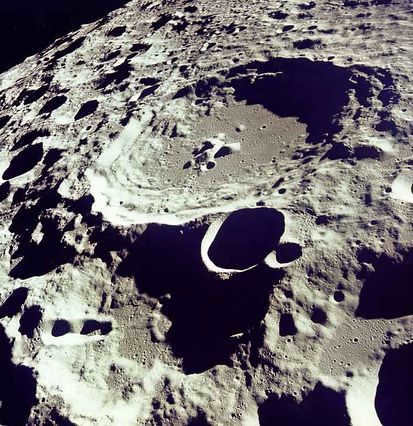
Lunar astronomy: the photograph shows the impressive Daedalus crater, which was captured by the crew of Apollo 11 during their mission to the Moon in 1969. Situated on the hidden side of the Moon, this crater boasts a diameter of approximately 93 km.
Astronomy (derived from the Greek word αστρονομία, which combines αστρον meaning star and νόμος meaning law) is the scientific study of the position, structure, characteristics, origin, and evolution of celestial bodies and their systems, including the entire universe. It encompasses various subjects such as the Sun, the planets and their moons within the solar system, asteroids, comets, meteorites, interplanetary matter, stars and exoplanets, nebulae, interstellar matter, galaxies and their clusters, pulsars, quasars, black holes, exoplanets, and much more.
Classification of astronomy [ edit edit code ]
A contemporary classification system has been developed to categorize various branches of astronomy, which are interconnected and conventionally divided.
The primary categories of astronomy include:
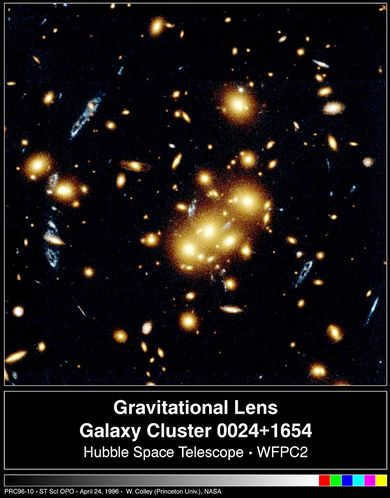
Gravitational lensing is the focus of extragalactic astronomy. In this picture, you can see a cluster of yellow galaxies near the center, and several blue loop-shaped objects that are actually multiple images of a single galaxy. The cluster’s gravitational field acts as a lens, bending light rays and causing magnification and distortion of the distant galaxy’s image.
- Astrometry is a branch of astronomy that studies the apparent positions and motions of celestial objects. It also deals with determining geographic coordinates and precise time based on these observations. Some topics within astrometry include:
- Spherical astronomy is a field that focuses on developing mathematical techniques for calculating the apparent positions and movements of celestial bodies using different coordinate systems. It also includes studying the theory behind the regular changes in the coordinates of stars over time.
- One of the main tasks of fundamental astrometry is to determine the coordinates of celestial bodies based on observations. It also involves creating catalogs of stellar positions and calculating the numerical values of important astronomical constants. These constants help account for the predictable changes in the coordinates of stars.
- Practical astronomy encompasses the methods used to determine geographic coordinates, directional azimuths, and precise time. It also involves studying the instruments used in these processes.
Classical astronomy, often referred to as the three sections, addresses the initial problem in astronomy.
- Astrophysics focuses on examining the structure, physical properties, and chemical composition of celestial objects. It is divided into two categories: a) practical astrophysics, which involves the development and application of practical methodologies, instruments, and devices for astrophysical research; b) theoretical astrophysics, which seeks to explain observed physical phenomena based on the laws of physics.
Astrophysics branches out into various sections that utilize specific research methods.
- Stellar astronomy investigates the patterns of spatial distribution and motion of stars, stellar systems, and interstellar matter while considering their physical characteristics.
These two sections primarily focus on the second task of astronomy.
- Cosmogony deals with the origin and evolution of celestial bodies, including our planet Earth.
- Cosmology examines the overall patterns of the structure and development of the universe.
Building on the knowledge gained about celestial bodies, the last two sections of astronomy address its third problem.
The general astronomy course provides a systematic presentation of information about the main methods and significant findings from different branches of astronomy.
Archaeoastronomy, a new field that emerged in the second half of the 20th century, explores the astronomical knowledge of ancient civilizations and aids in dating ancient structures using the Earth’s precession phenomenon.
Areas of study in astronomy [ edit edit code ]
- Astrometry
- Constellations
- Celestial sphere
- Celestial coordinate systems
- Time
- Stellar evolution
- Neutron stars and black holes
- The Milky Way
- Structure of galaxies
- Evolution of galaxies
- Redshift
- Relic radiation
- Big Bang Theory
- Dark matter
- Dark energy
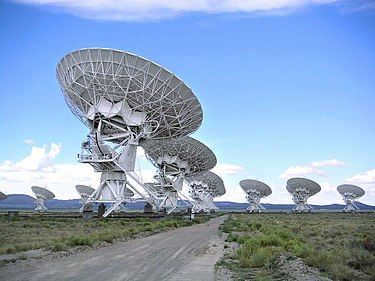
Aims of astronomy [ edit correct code ]
The primary aims of astronomy include:
- Investigating and elucidating the apparent movements of celestial entities, discovering the patterns and causes behind these movements.
- Exploring the composition and characteristics of celestial bodies, their physical and chemical attributes, and constructing models of their internal makeup.
- Addressing the questions regarding the origin and evolution of celestial bodies and their systems.
- Examining the fundamental properties of the Universe, formulating a theory about the observable portion of the Universe – the Metagalaxy.
In order to solve these issues, it is necessary to develop effective research methods – both theoretical and practical. The first problem can be addressed through long-term observations, which have been conducted since ancient times, as well as by applying the laws of mechanics, which have been known for approximately 300 years. As a result, the field of astronomy possesses a wealth of information, particularly regarding celestial bodies that are relatively close to Earth, such as the Moon, the Sun, planets, asteroids, and so on.
The solution to the second problem became feasible with the introduction of spectral analysis and photography. The investigation into the physical characteristics of celestial bodies commenced in the latter half of the 19th century, but it is only in recent years that the primary issues have been thoroughly examined.
To accurately depict the formation and evolution of celestial bodies and their systems, it is essential to gather a substantial amount of empirical evidence. However, the current available data is inadequate for such a comprehensive understanding. As a result, our knowledge in this field is restricted to broad speculations and a variety of more or less credible theories.
The fourth task is the biggest and most challenging. Experience demonstrates that current physical theories are no longer adequate for resolving it. A more comprehensive physical theory must be developed that can describe the state of matter and physical processes at extreme values of density, temperature, and pressure. Solving this problem necessitates observational data from regions of the Universe situated billions of light years away. Contemporary technological capabilities do not permit us to thoroughly investigate these areas. However, this task is presently the most pressing and astronomers in various countries, including Russia, are successfully addressing it.
Revised History of astronomy [ edit code ]
Revised See also [ correct code ].
Revised References [ correct code ]
- Russian Astronomical Network (Astronet)
- Solar System Research
- P. K. Sternberg State Astronomical Institute (GAISh)
- Astrotop
- Astronomy news in 11 languages
- Astronomical portal, telescopes, Hubble telescope, constellations
- Project ‘Astrogalaxy’
- Astrovikipedia ‘Astrogalactica’
- Astronomy for school students
- Open College: Astronomy
- Space Research Institute
- Astro-Cosmic Center FIAN
- Institute of Astronomy RAS
- Special Astrophysical Observatory RAS
- Astronomy Digital Libraries
- Electronic library of amateur astronomer
- Catalog of Russian astronomical websites
- Astrohorizon – NASA news in Russian
- Astroproject – Astronomy and cosmonautics news in Russian
- Astronomy section on the pages of the scientific and educational magazine “Skepsis”
- Space Forum – Discussion of astronomy and cosmonautics topics
- State rubricator of scientific and technical information (GRSTI) (as of 2001): 41 ASTRONOMY
Literature [ edit edit code ]
- Stephen Maran Astronomy For Dummies = Astronomy For Dummies . – Moscow: Dialectics, 2006. – С. 256 . – ISBN0-7645-5155-8about the book
- Povitukhin B. G. Astrometry. Celestial mechanics: Textbook. – Biysk: SIC BiHPI. 1999. – 90 с.
- Astronomy – A History – G. Forbes – 1909 (eLib Project)
Astronomy, the study of the universe, encompasses the exploration of its motion, organization, and structure. It also investigates the origins and evolution of celestial bodies and star systems. In essence, astronomy is the comprehensive examination of space, planets, and other celestial entities.
Lecture: The Field of Study in Astronomy
It should be noted that in compliance with Federal Law No. 273-FZ “On Education in the Russian Federation”, educational activities, training, and education of students with disabilities are organized both in conjunction with other students and in separate classes and groups.
Specialty 08.02.01 “Construction and Operation of Buildings and Architectural Structures.”
Course III Groups: 1c1, 2c1, 3c1, 4c1
Teacher: Natalia Zhudanova
LECTURE 1: The Scope of Astronomy and its Focus on Observation (2 hours)
Interdisciplinary Connections
Astronomy as a topic of study
Astronomy, which takes its name from the Greek words “astron” (star) and “nomos” (law), is the scientific study of the laws governing the celestial bodies. Apart from stars (Fig. 1.1), the universe, as we currently understand it, encompasses a vast array of cosmic entities and their arrangements, including planets, asteroids, comets, galaxies, and nebulae. Consequently, astronomers scrutinize all celestial bodies beyond Earth and their interactions. The Greek word “cosmos” denotes “order,” as opposed to “chaos,” which signifies disorder. In essence, ancient Greek scholars recognized that the presence of laws in the universe implies a certain harmony in the heavens. Nowadays, we conceptualize the universe in terms of space. Modern astronomy employs various methodologies to explore the universe. Astronomers not only acquire knowledge about the distant cosmos by investigating the radiation that reaches Earth’s surface from outer space, but they also conduct experiments both within our immediate vicinity and in the far reaches of the universe.
For centuries, the sky has captivated the human imagination with its enigmatic allure, but it has remained an inaccessible and thus sacred realm. Throughout history, the sky has been populated with gods who govern the world and determine the destiny of humanity. Mesmerized by the ethereal radiance of the stars during the night, ancient astronomers linked each star to a human or animal form, assigning names to these constellations. As time progressed, celestial bodies that appeared to move amidst the stars were dubbed planets, derived from the Greek word for “wandering”.
Efforts to comprehend the peculiar celestial phenomena date back over 4000 years in ancient Egypt and even earlier in ancient Greece. The Egyptian priests were the pioneers in charting the starry expanse and bestowing names upon the planets.
In the 6th century BC, Pythagoras, an ancient Greek philosopher and mathematician, presented the concept that the Earth possesses a spherical shape and exists in space without any support. During the 2nd century BC, Hipparchus, an astronomer, determined the distance between the Earth and the Moon and observed the phenomenon of the Earth’s axis of rotation precession.
During the 2nd century AD, Claudius Ptolemy, an ancient Greek philosopher, proposed a geocentric theory of the Earth. According to this theory, the Earth is surrounded by eight spheres, which contain the Moon, the Sun, and the five planets known at that time (Mercury, Venus, Mars, Jupiter, and Saturn).
The group of stars in the eighth sphere are interconnected and rotate around the entire planet. In the sixteenth century, a Polish astronomer named Nicolaus Copernicus put forth a revolutionary idea about the motion of celestial bodies. According to Copernicus, the Sun is the central point around which the Earth and other planets move in a circular path.
Copernicus’ groundbreaking theory of celestial motion was based on the concept of eliminating the boundary between heaven and earth. He hypothesized that the same laws of physics govern both earthly and celestial bodies.
In 1609, an Italian physicist named Galileo Galilei made significant advancements in our understanding of the universe. Using a telescope, Galileo observed celestial objects and made remarkable discoveries. He observed the moons of Jupiter and also observed stars within the Milky Way.
The 18th century in the field of astronomy is most famously associated with the accomplishments of British scientist Isaac Newton. Newton’s groundbreaking discovery was the law of universal gravitation, which demonstrated that gravity is a force that affects all objects in the universe. This means that the force pulling an apple to the ground is the same force that attracts the Moon to orbit the Earth. Gravity plays a vital role in the movement of stars, galaxies, and the overall evolution of the universe.
In the 19th century, German physicist Fraunhofer made a significant contribution to the study of the universe by discovering absorption lines (known as Fraunhofer lines) in the Sun’s spectrum in 1814. This discovery led to the identification of absorption lines in the spectra of other stars, marking a new era in astronomical research. Astronomers utilize spectra to analyze the chemical composition, temperature, and even the velocity of celestial bodies.
Addressing the third problem of astronomy, the last two sections delve into the origin and evolution of celestial bodies, drawing from all the knowledge acquired about them.
The Development of Astronomy
Stonehenge and the pharaonic pyramids in Egypt serve as evidence of the ancient manifestation of human astronomical knowledge. The former bears a striking resemblance to an observatory, while the latter exhibits strict orientation in certain parts of the world.
Pythagoras was among the first to propose hypotheses regarding the Earth’s spherical structure. In ancient times, ideas about the Earth revolving around the Sun were also formulated.
Related article: 10 places in the universe where the possibility of finding life is highest. Which planets hold the potential for sustaining life?
In the Middle Ages, the field of astronomy was largely neglected due to the dominance of the religious classes, posing a significant challenge to the advancement of scientific knowledge.
During the 16th century, a significant breakthrough occurred with the groundbreaking theory proposed by Polish astronomer N. Copernicus. He became the first to provide theoretical evidence that the Earth and other planets revolve around a central mass – the Sun.
The invention of the telescope by G. Galileo in the early 17th century further revolutionized the study of astronomy. Galileo’s invention allowed humanity to gain a deeper understanding of the fundamental principles governing planetary motion and to develop the initial hypotheses regarding the origins of stellar systems. Additionally, in this period, the German scientist J. Kepler discovered the three fundamental laws of celestial mechanics.
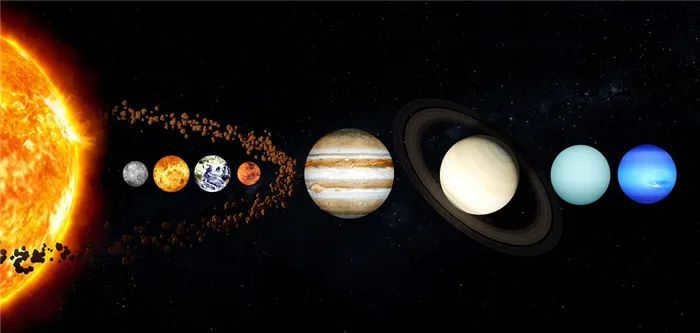
In the early 1800s, the field of astronomy experienced a significant boost in its development with the introduction of spectral analysis and photography. This breakthrough gave rise to a new branch of study known as astrophysics, which has since become one of the most advanced areas within the field of astronomy. Through astrophysics, humanity has gained invaluable insights into the organization and evolution of our galaxy, as well as the emergence of the first scientifically supported theories regarding the origin of the universe.
Thus, a concise historical overview provides a glimpse into the subject matter explored by astronomy.
Theory and Practice in the Field of Astronomy
From a scientific standpoint, modern astronomy can be divided into two distinct streams, each with its own set of challenges.
Theoretical astronomy focuses on formulating methods to calculate the laws of motion of celestial bodies, using their apparent distances as input data.
Practical astronomy, on the other hand, is centered around satellite navigation and the study of navigational instruments. It aims to solve crucial problems related to determining the precise time and coordinates of celestial objects.
Pythagoras was among the first to propose the idea of Earth’s spherical structure. In ancient times, theories about Earth’s motion around the Sun were also developed.
Astronomy Objectives
Like any other scientific field, astronomy has specific goals and objectives.
Currently, there are three main objectives in astronomy. Firstly, it aims to study and determine the position, motion, shape, and size of celestial bodies. Secondly, it focuses on understanding the structure and mechanics of these celestial bodies. Lastly, it investigates their formation, development, and future.
In the past, astronomy was more philosophical in nature. However, with advancements in technology, it has become a more precise and scientific discipline. Today, astronomy is closely intertwined with mathematics, physics, chemistry, and biology. Additionally, philosophy still plays a role in the fundamentals of astronomy.
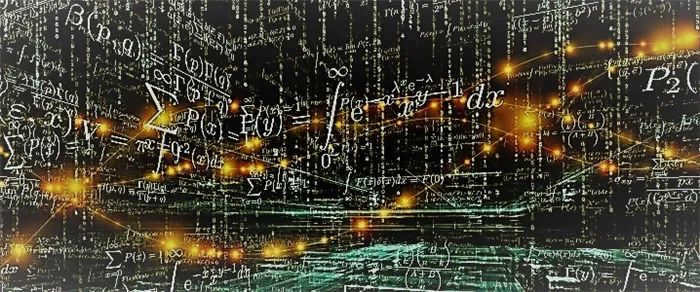
What is the primary objective of astronomy? I believe you are already aware. It serves as the fundamental scientific discipline for exploring and examining phenomena and entities within the vastness of the universe. Naturally, its purpose is to gain insight into the nature of the universe, comprehending its structure and defining its characteristics. Humanity’s aspiration is to unravel its enigmas and puzzles. Scientists endeavor to elucidate its origins. Furthermore, everyone yearns to glimpse into the future, deciphering the truth and unraveling the true nature of our world.
Article on the subject: Why is World of Tanks not functioning? What is causing the lack of connectivity and audio in tanks? Additionally, what is the reason behind the malfunctioning chat room in War Thunder?
Thanks to the field of astronomy, we have acquired a vast amount of knowledge. It is without a doubt that there will be further advancements in the future. The pursuit of progress is constant and unending. Undeniably, science has already made significant progress, is currently making progress, and will continue to do so. With this in mind, we eagerly anticipate the future and look forward to further discoveries.
Using your hands, identify the prominent stars indicated on the star chart. Sketch the stars that are visible in the sky. Compare your sketch with the star chart to determine which constellations these stars belong to.
Astrolabes
An instrument utilized for observing the celestial heavens is referred to as an astrolabe – the initial astrolabe was conceived by Galileo Galilei in 1609. As time progressed, this variety of astrolabe underwent enhancements. Rather than utilizing lenses, large mirrors were employed. Presently, the largest astrolabe possesses a mirror diameter of 10.4 meters (the Grand Canary Astrolabe).
In the 20th century, radio astrolabes emerged to pick up radio waves from outer space. These consist of colossal dish antennas equipped with sophisticated hardware.
The Hubble Space Astrolabe embarked on its mission in 1990; it is projected to remain operational until the culmination of 2021.
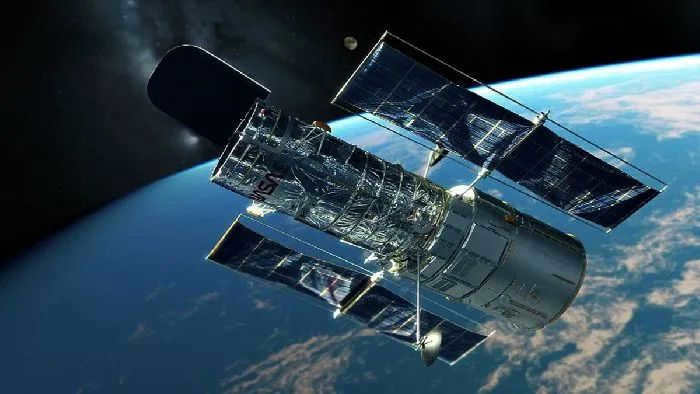
Archaeoastronomy is a recently developed field that came into existence during the latter half of the 20th century. Its purpose is to examine the astronomical understanding of past civilizations and utilize this knowledge to determine the age of ancient structures based on the Earth’s precessional motion.
Exploring the Night Sky: A Fascinating Pastime
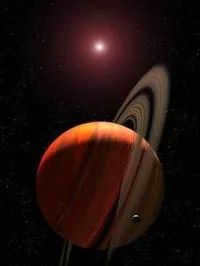
The subject of astronomy has long been a source of intrigue and captivation for countless individuals. With numerous amateur astronomers around the globe, many significant celestial discoveries have been made by these enthusiasts. One noteworthy example occurred in 2009 when Australian observer Anthony Wesley detected evidence of a celestial object colliding with Jupiter, potentially indicating the presence of a comet.
By studying astronomy, we gain knowledge about the natural laws and witness the gradual progression of the universe. Astronomy has revolutionized people’s perception of the world: in the 21st century, there is much discussion about galaxies, extraterrestrial life, and other celestial topics. However, regrettably, many individuals lack the necessary knowledge in this field. The interest of uninformed journalists and the propagation of unsubstantiated claims by scientists have led many to believe in pseudoscientific discoveries.
A variety of high-quality scientific videos have been produced, focusing on the universe, different stars, planets, and galaxies. These videos feature stunning graphics and authentic footage from space, captivating viewers and facilitating a better understanding of the fascinating field of astronomy. Take a look below for a compilation of these remarkable works.
Writer: Tatiana Sidorova Revised: March 15, 2018 Reproduction without a live hyperlink is not allowed.

“Social rating” is currently being tested among taxi drivers.
The primary focus at the moment
News and Updates
- 05:01 Moscow time. Gasoline shortages reported in Elista, Kalmykia by local authorities
- 04:36 Moscow time.
 Sobyanin: A drone has been shot down over Moscow
Sobyanin: A drone has been shot down over Moscow - 04:23 Moscow time. Russia considers banning the sale of additional services on subsidized flights
- 03:04 Moscow time. Explosions heard in Moscow and the surrounding region
- 01:10 Moscow time.
 A working group will be formed to develop a high-speed railway between Moscow and St. Petersburg
A working group will be formed to develop a high-speed railway between Moscow and St. Petersburg - 00:05 Moscow time. Russian athletes hospitalized after visiting a pool in Sochi
- 00:02 Moscow time.
 The Russian Defense Ministry has reported that there was an attempted attack on the ships of the Black Sea Fleet by the Armed Forces of Ukraine
The Russian Defense Ministry has reported that there was an attempted attack on the ships of the Black Sea Fleet by the Armed Forces of Ukraine - Yesterday 21:00 Moscow time. Is there a new president in Belarus? Lukashenko stated that he has not yet made a decision about participating in the elections
- Yesterday 21:00 Moscow time. The RCC FEST has started in Yekaterinburg, featuring the BMX championship, kickboxing, and a battle between Klava Koka and NILETTO
- Yesterday 20:46 Moscow time. Russia has approved an order to transfer students from families with participants of the SWO to the budget
- Yesterday 20:22 Moscow time. A midfielder from CSKA is moving to Istanbul’s “Besiktas”
- Yesterday 20:06 Moscow time. The United States has added four Russians accused of poisoning Navalny to their sanctions list*
- At 19:53 Moscow time yesterday, Lukashenko revealed the condition under which Belarus would join the conflict in Ukraine.
- At 19:17 Moscow time yesterday, plans were announced to resume direct flights between Ekaterinburg and China.
- Yesterday at 17:59 Moscow time, a fighter known as “Dema” arrived in Surgut for vacation and brought a Cheburashka toy for his daughter.
- At 17:48 Moscow time yesterday, doctors received a new medical center as a gift from Urals patrons in honor of Yekaterinburg’s 300th anniversary.
- At 16:28 Moscow time yesterday, leading enterprises in the Vladimir region became involved in the vocational guidance project “Ticket to the Future”.
- At 16:25 Moscow time yesterday, the UMMC ice arena under construction caught fire in Yekaterinburg.
More news
Materials archive
Analytics all materials
Astronomy has been added to the school curriculum: Updates to the FSES
The Federal State Educational Standards (FSES) for secondary general education have been significantly revised in accordance with the principle of unity of educational space, which is now one of the fundamental principles of state policy in the field of education. This update has been officially incorporated into the Federal Law “On Education in the Russian Federation,” as announced by the Ministry of Education of the Russian Federation on On the Eve.RU.
As per the standard for high school education, the curriculum should consist of a minimum of 13 subjects:
- Russian language,
- literature,
- foreign language,
- mathematics,
- computer science,
- history,
- geography,
- social studies,
- physics,
- chemistry,
- biology,
- physical education,
- basics of life safety,
Additionally, it is required to provide in-depth study of at least two subjects.
An important advancement is the in-depth examination of social studies during high school. This includes:
During the biology, chemistry, and physics courses, students will cover topics on ecology and natural history.
The subject “Russia in the World” has been added to the history and social studies curriculum. Additionally, a new academic subject called “Russia – my history” is currently being piloted for high school students.
Previously, questions regarding law, economics, natural science, astronomy, ecology, and “Russia in the World” were not part of the test materials for the All-Russian exams and the State Final Attestation. Students were able to choose these topics on their own. However, now that they have been included in the Federal State Educational Standards (FSES), students’ knowledge in these areas will be assessed.
As a rule, all subjects are included in the school curriculum and now it has become even more comprehensive. Additionally, educational institutions have the freedom to incorporate any extra subjects and courses based on the students’ preferences and their own capabilities.
"The update of the FSES for high school enables a return to the traditional approach of teaching subjects, focusing on the cultural and educational traditions of general education, and enhancing the core component of each academic discipline", stated the Ministry of Education press service.

